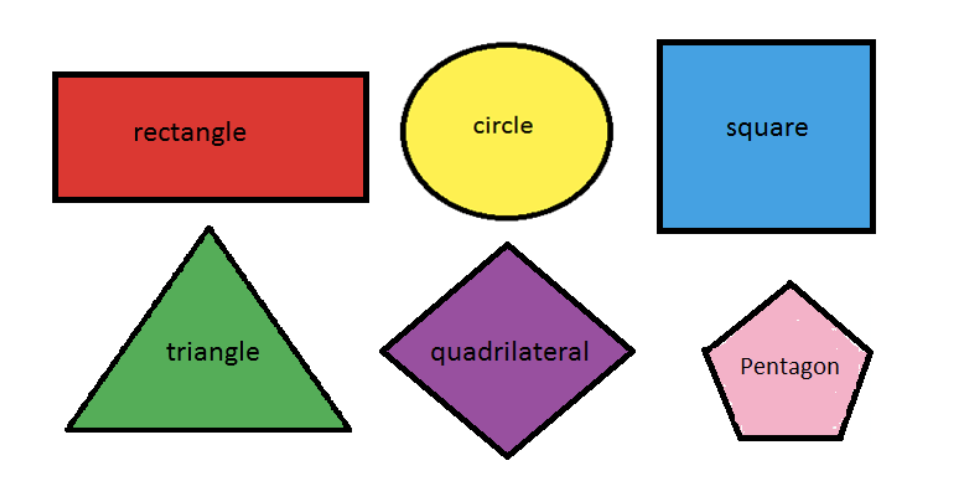What are 2D shapes?

Students need to understand the concept of 2D shapes in their early learning phases. This is a part of mathematics that acts as the foundation for other advanced mathematical concepts and topics. 2D shapes in maths are crucial to understand as they are a common component in different aspects of life.
What are 2D shapes?
In mathematics, 2D shapes are defined as objects with two dimensions. These dimensions, such as height and width, can be drawn in two planes only. One example of a 2D shape is a circle or a rectangle. 2D shapes are different from 3D (three-dimensional) shapes because they are flat and lack depth or thickness. 2D shapes can usually be referred to as flat shapes or plane figures.
The mathematical meaning of 2D
When studying 2D shapes, 2D is used to represent 2-dimensional, which means that the object can be expressed in only two planes. Dimensions are known as mathematical measurements that follow a certain direction. Examples of mathematical dimensions are length, breadth or width, height, and depth. 2D shapes have perimeters and areas, which are usually computed by using various geometric formulas.

Some examples of 2D shapes
What are 2D shapes? There are several 2D shapes in maths. These shapes are classified according to their properties. 2D shapes examples can best be understood by the nature of the shape. There are several ways that you can classify 2D shapes. They are irregular and regular 2D shapes. Irregular 2D shapes have unequal angles and sides. In addition, we can classify some types of 2D shapes as convex or concave, which is dependent on the type of internal angles they have. The following are the most popular 2D shapes in math.
Curved 2D shapes
Some examples of curved 2D shapes include the semi-circle. The semi-circle has an irregular shape. It has two sides: one curved and the other straight. A circle is another example of a 2D shape. Circles have curved boundaries that can be expressed using a two-plane system (x and y axes). The center of a circle is equidistant from all points along its circumference.
2D shapes that are triangles
- Equilaterals: This is the type of triangle that has all sides and angles equal. It has a regular shape.
- Right-angled triangle: This is any triangle that comes with one right angle. It has an irregular shape.
- Scalene triangle: This is an irregular-shaped triangle that has different angles and sides.
- Isosceles triangle: This is an irregular-shaped triangle where only two sides and angles are the same.
2D shapes that are quadrilaterals
Quadrilaterals and polygons are examples of 2D shapes. Why are quadrilaterals limited to four sides, while polygons have multiple sides that are more than four in number? Quadrilaterals are shapes with two dimensions and four sides. Examples of quadrilateral 2D shapes include parallelograms, rectangles, and squares. Square: This is a regular quadrilateral 2D shape that has all sides and angles equal.
- Rectangle: This is an irregular quadrilateral that has all angles equal and two pairs of similar sides.
- Rhombus: This is an irregular quadrilateral that has two pairs of parallel lines. While all sides of a rhombus are equal, only opposite angles in the shape are equal.
- Trapezium: This is an irregular quadrilateral that has one pair of parallel lines.
- Parallelogram: In a parallelogram, two pairs of lines are parallel. The shape also has a pair of equal angles that are located opposite each other.
- Pentagon: This is a polygon with 5 sides. These are polygons whose total internal angle value adds up to 540 degrees. There are both regular and regular-shaped pentagons.
- Hexagon: This is a regular polygon that has six sides. All interior angles have a total value of 720 degrees. There are both irregular and regular-shaped hexagons.
- Septagon/Heptagon: This is a regular polygon that has 7 equal or unequal sides, and its interior angles add up to 900 degrees.
- Octagon: This is any regular polygon or shape that has 8 sides. All interior angles in an octagon add up to 1080 degrees.
- Nonagon: A nonagon is any shape or regular polygon that has nine sides. The interior angles of this shape all add up to 1260 degrees.
- Decagon: A decagon is a 2D shape that has ten equal or unequal sides. The interior angles of the decagon all add up to 1440 degrees.
How are 2D and 3D shapes different?
As we go through the different 2D shapes in math, there must also be 3D shapes. It can be quite confusing to understand the properties of 3D shapes. This is why you have to fully understand all the 2D shapes examples you can. 3D shapes are shapes or objects that have three dimensions. Concerning space, all 3D shapes can be measured in three different ways. 3D objects can be measured along their heights, breadths, or lengths.
One of the main differences between 2D and 3D shapes is that 3D objects are not flat. While 2D shapes are flat, 3D shapes have depth. Another important point to note about the differences between 2D and 3D shapes is the number of dimensions.
2D shapes have only two dimensions. 3D shapes have three dimensions. While we have gone through examples of 2D shapes, there are also examples of 3D shapes. These include dodecahedrons, cubes, prisms or pyramids, ovoids, rhombohedrons, and spheres. If you need to know more about 2D and 3D shapes, you can rely on MathMaster, an innovative math resource and app.